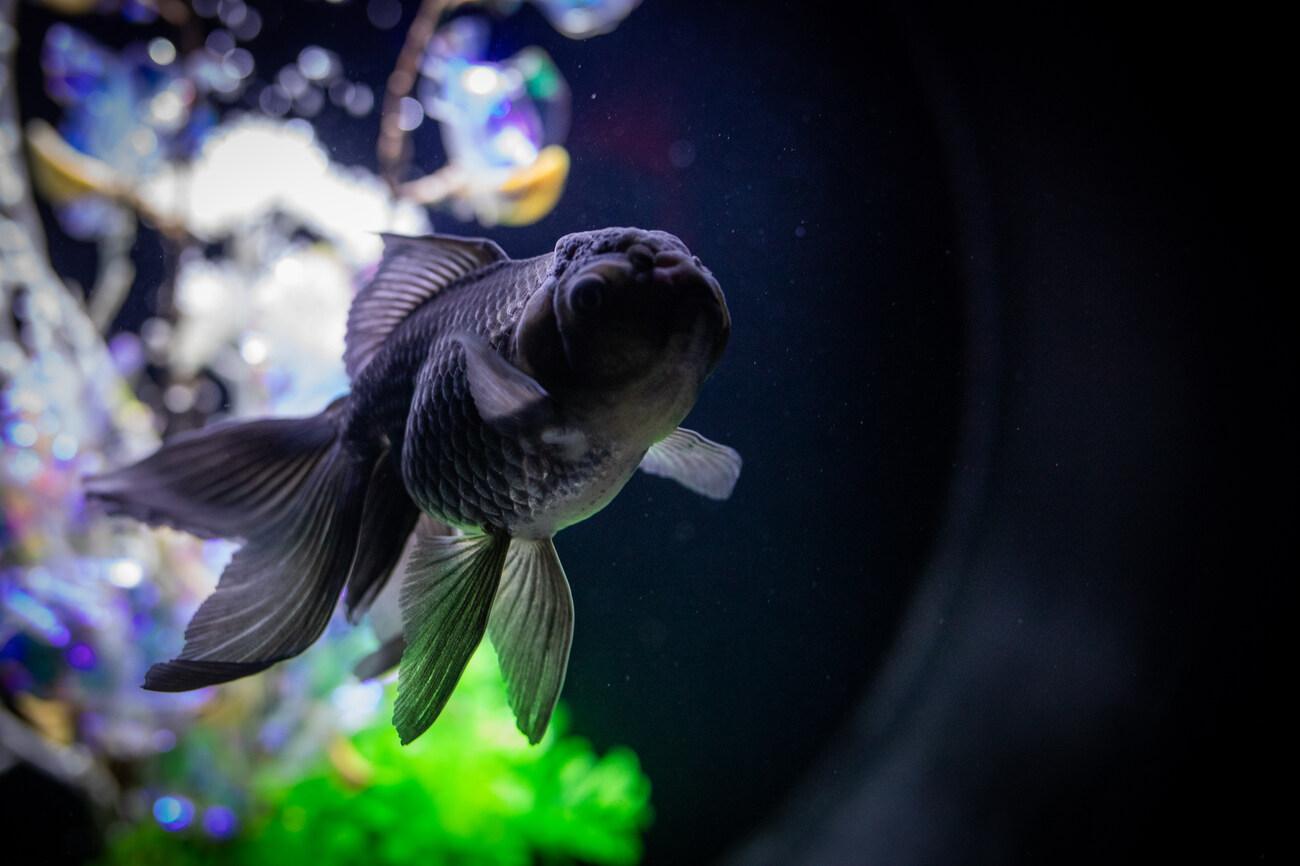Understanding the Mystery: Why is my Goldfish Turning black
Goldfish have, for a long time, been loved by aquarium enthusiasts because of their bright coloring and captivating presence. These fish are usually hardy and can live in varied types of water. However, it may be a cause for concern: why is my goldfish turning black suddenly? The sudden change of color makes pet owners worry about why this happens and what can be done to prevent it.
Common goldfish colors
Goldfish showcases a beautiful array of colors, from the classic orange to elegant shades of white, black, calico, and even eye-catching metallic tones! These lovely colors come from years of careful breeding, where breeders aimed to bring out specific characteristics. It’s also fascinating to note that even within a single species, individual goldfish can have their own unique color variations!
Possible reasons for a goldfish turning black
If your goldfish starts becoming dark-colored, there could be several underlying problems that could cause this condition. Knowing these causes is significant so that you can take the right course and regain its health back, along with its vibrant colors.
Water quality and its impact on goldfish color
One reason that results in your goldfish turning black is bad water quality. Goldfish do not adapt quickly to changes in their aquatic environment hence imbalances in some water parameters can highly affect them such as their skin pigmentation.
- High levels of ammonia or nitrites: These toxic compounds are products of poor filtration or excessive feeding leading to stress and possibly changing your goldfish’s colors.
- Low oxygen levels: When there isn’t enough oxygen in your tank water; your lovely pet might become stressed out thus transforming its skin hues into darker ones as a protective mechanism.
- pH imbalances: Goldfish require an alkaline pH level slightly above neutral while any fluctuation beyond that range will alter their healthiness and pigmentation.
- High levels of dissolved organic compounds: If organics such as rotting plant material, uneaten food, and fish droppings are in the water, they will cause discoloration to your goldfish.
To maintain proper water quality, change water frequently, use a good filter, and do not overfeed your goldfish.
Stress and its effect on goldfish color
Another common reason why goldfish turn black is due to stress. Goldfishes are delicate creatures that may change their color when exposed to different environmental conditions or external factors that could induce stress responses against them.
- Aggressive tankmates: If you keep your goldfish with aggressive or territorial aquarium inhabitants, it might darken its skin in order to protect itself from constant harassment and stress.
- Sudden changes in water parameters: Your pet may suffer stress if there are abrupt fluctuations in temperature, pH levels, or any other parameter resulting in color variations.
- Overcrowding: Keeping so many fish in a small aquarium can be quite stressful for them because the more room they have, the better off they will be, especially for goldfish-keeping hobbyists.
- Lack of hiding places: Goldfish prefer feeling secure by staying inside caves, plants, and other hiding spots; therefore, their absence can cause stress, leading to a changing process among others.
Thus, having a less stressed environment, such as peaceful tank mates, gradual changes in the parameters of water, and sufficient hiding places would minimize such stresses.
Genetic factors that can cause a goldfish to turn black
Some cases of a goldfish turning black are genetic. Selective breeding has made some varieties, notably the Black Moor or the Shubunkin, much darker and sometimes with additional markings.
- Melanin production: Goldfish produce melanin, which is responsible for dark coloration. However, some individuals may produce more than others, leading to a darker or black look.
- Genetic mutations: During crossbreeding, genetic mutations may result in unexpected colors, including darker shades that sometimes approach complete blackness.
- Age-related changes: Some goldfish would get darker as they grow old; these changes might have been spread among them over time.
While usually not a concern in terms of genetics, it is important to monitor your goldfish’s general health and behavior to ensure that its change in skin tone does not signify an underlying problem.
Other health issues that may cause a goldfish to change color
Apart from water quality, stress, and genes, there are several other health problems associated with turning black or changing color in goldfish.
- Bacterial or fungal infections: Some bacteria and fungi can make the body of the fish become discolored, with certain patches developing on it, causing it to be dark all over.
- Parasitic infestations: Other causes include parasites like ich and flukes, which irritate or inflame, hence resulting in color alteration, which is a secondary aftereffect triggered by such irritation and inflammation.
- Nutritional deficiencies: Inadequate nutrition will affect overall fish health, including coloration levels.
- Injuries or physical trauma: Physical injuries cause stress responses, which include possible color change as part of a defense mechanism, in the case of goldfish that experience physical traumas.
If you think that your fish’s new color reflects an internal problem related to its condition, you should consider talking to a qualified aqua veterinarian who knows about fish well enough so as to receive an accurate diagnosis for treatment purposes only then you should be sure that the health issue is caused by something else.
Tips for preventing a goldfish from turning black
To keep your goldfish’s bright color and overall well-being, there are measures prior to any problem. Below is some advice on how to avoid having black goldfish:
- Maintain optimal water quality: Keep changing the water frequently, maintain a good filter system, and regularly check the water parameters in order to have a clean aquatic surrounding.
- Provide a stress-free environment: Avoid overcrowding your aquarium, add new tank mates gradually, or develop hiding places for your fish so as not to get stressed.
- Offer a balanced diet: Give them high-quality food with all the necessary elements that can provide their body with enough nutrients for healthy living and better coloration.
- Isolate new fish: If you want to stop transferring diseases or parasites from one fish to another, quarantine any newcomer before it gets into your main goldfish tank.
- Keep the right temperature in the tank: The water should remain cool as most cold-water fishes would prefer between 65°F and 72°F (18°C – 22°C). Temporal changes might cause stress-related color alterations.
Make frequent checks on the tank: Clean your aquarium regularly, remove uneaten foods, trim or eliminate decaying plants for you to create an atmosphere that will ensure sound growth of fish in it.
Conclusion
Understanding why a goldfish turns black is important because it assists one in tackling the issue at hand while giving best attention possible to his/her pet fish. The most ideal way therefore is maintaining best water quality conditions while reducing stresses; treating any complications and taking preventive measures. By maintaining proper water quality, minimizing stress, addressing any underlying health issues and implementing prevention measures, you can help ensure your goldfish’s vibrant coloration and overall well-being.







